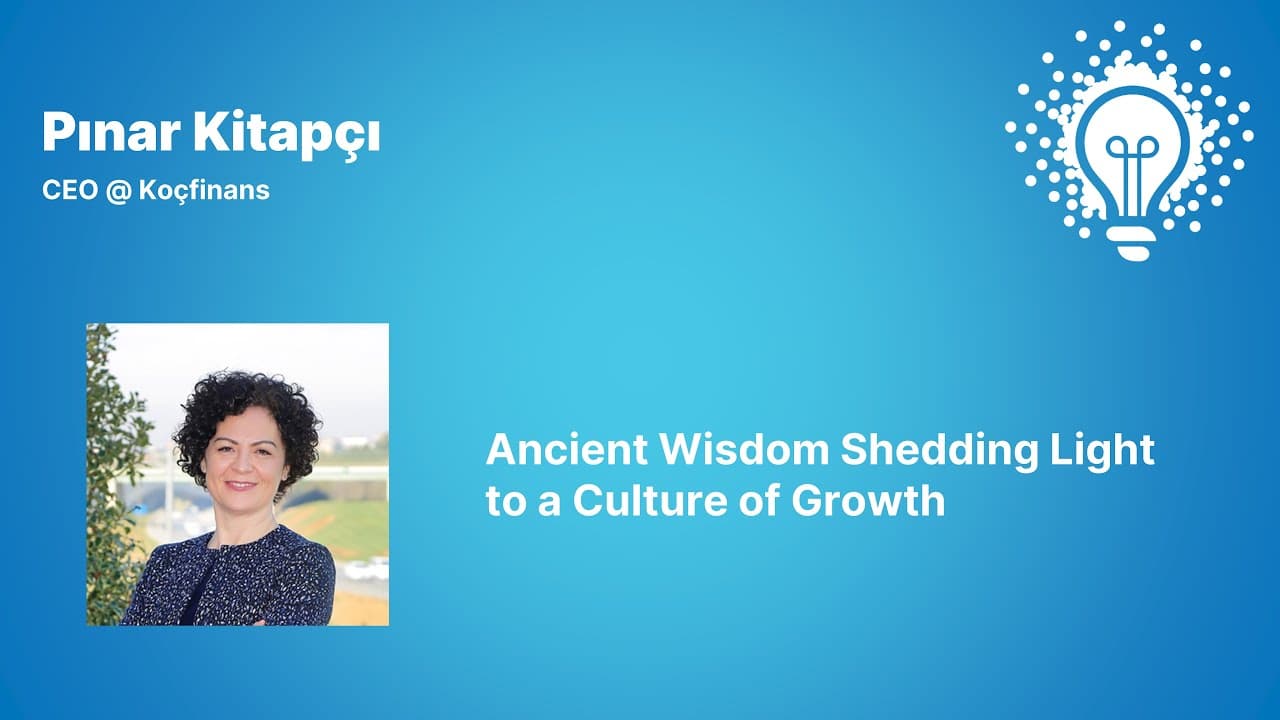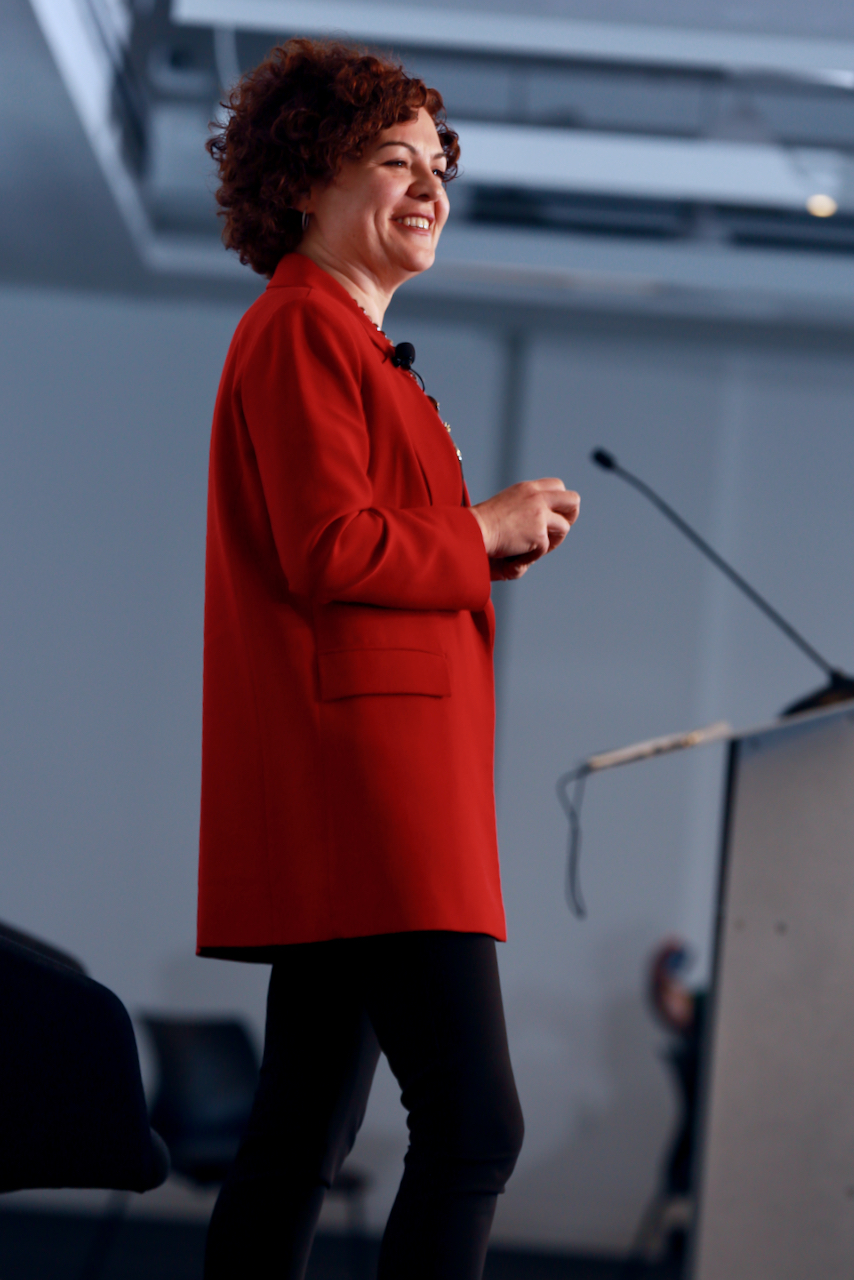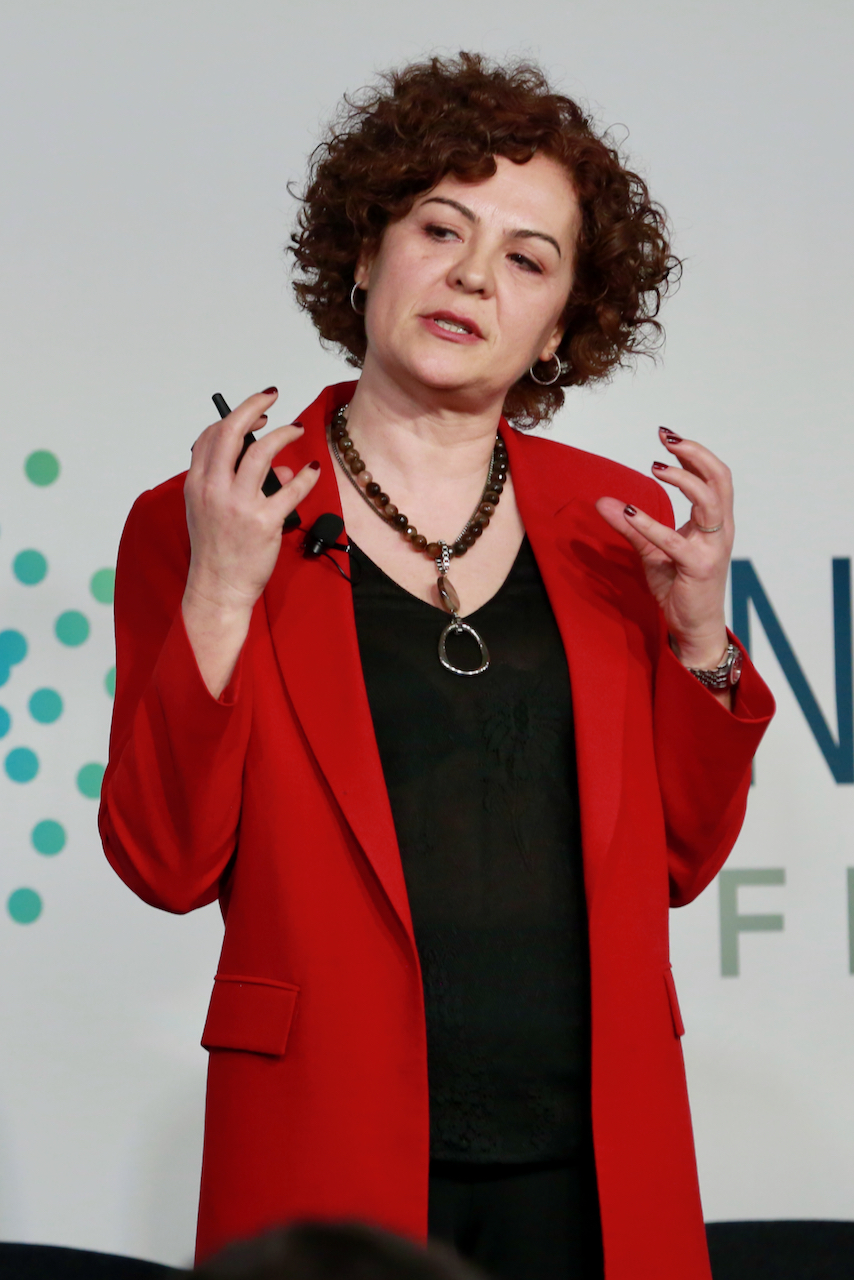Hi everyone. I'm here to share our story, with inspirations from a mystic, as Stu said. But before getting into that, I'd like to give a little bit of context. Well, we are working in Turkey. It's a developing country full of uncertainties. Lots of volatility. Our Turkish Lira competes with only Bitcoin in volatility, in fact. And you can see our inflation rates here. Our monthly rates are above the yearly rates of most countries.
So, Agility is what we should have to survive in Turkey. And Koçfinans is part of Koç Holding, the biggest company in Turkey. It's a Fortune 500 listed company having global operations, a very diverse conglomerate, and has a considerable share of Turkish GDP. And, as you can guess, Koç affiliates are mostly incumbents in their sectors. And the group is well aware that what got us here won't get us there.
And is in a big cultural change program. With its more than 60 companies and 110,000 employees. And Koçfinans, the company I work for, is in financial services, in the group. We're specialized in consumer and SME lending. Doing mostly car loans, commercial vehicle loans, heavy truck loans, and loans for the car dealers themselves. And I have the privilege of being teammates of 120 wonderful people.
Finance as a sector has much room for improvement. Applying for a loan is definitely a pain point, isn't it?It requires KYC checks, lots of documentation. So fintechs are doing a considerable amount of business because of this reason. And we're going to a future where the finance offer will be totally embedded in the buying experience as seamless as possible.
So, we had to increase our agility, and enhance our agility, to keep our customer base. The bar on customer service is getting higher and higher. Like many companies, we started doing agile in technical software teams and soon realized that the real change will only come if we embrace Agility company-wide. No more tolerance for big long projects where you lose the customer in between the divided efforts of the departments. We need to get out of our perfectionist selves and embrace MVPs, leading by small teams.
So hesitating where and how to start.
This quote by Rumi inspired us to just start. Have you heard of Rumi before? Can I see the hands? Okay, good. For the ones who don't know him. He's a mystic from the 13th century. He's the master of Sufism with an influence way beyond time and borders. And in serendipity, his wisdom accompanied us through our journey. Getting inspiration from 500 years ago.
Well, I believe the philosophy behind Agility was there all the time for the eyes open to see it. So, this quote tells us not to worry about planning all in detail. To go on the road and to adapt to whatever comes forward.
So we decided to start with the business functions as well. We were one of the first movers and we became a Lighthouse in the group for the transformation to Agility. Well, I am a strong believer in walking the talk and leading by example. Here's another quote about that.
I think the leaders should own any change. And should really be in it for it to spread to the company. We heard yesterday about seeing is believing. So for the people to believe in any change that it will happen, the leaders has to be there with an open mind, with embracing failures, with being agile themselves, actually.
So, we thought starting with the leaders team as the first multifunctional team in the company was a good idea, and built our own team as the first team. We announced the formation of the team pitstop to the whole company. Included transformation PBIs in our backlog and invited them all to see our board. This was how they were seeing us working in agile practices. And I think it's about transparency as well.
This was an encouragement for business functions and many teams started to form in a couple of minds. And they did it with curious and relaxed minds. They probably did. If these dinosaurs can do it, we can give it a try.
So let's now discuss about how doing and being interact.
A valid warning for companies who are the beginners in their Agility journey is to not just do agile, but aim to be agile. It's not just about the practices of course. But I believe the visible signs of change are indispensable to ignite the real change. The doing part is indispensable.
It's like you put a smile on your face and you immediately start to feel happier, isn't it? But it's not enough of course. The soul has to catch up with the body. You may have heard of the story of the Westerner traveling with local tribesmen for several days. There was good progress, much distance covered, most of the boxes were checked and it was busy and productive. And then all of a sudden the tribesman stopped for no obvious reason and nothing happened. The Westerner, frustrated by this lack of progress, this waste of time, eventually asked the reason for the delay. And the answer was, we had been moving too fast and had to wait for our souls to catch up.
So the tribes, teams, rituals, new roles are all part of the body advancing towards the goal. And behaviors, relationships, the way decisions are made in a company are part of the soul. And connecting the two harmonizing, the two is so important for it to last. For it to stay.
So when I look back I see that, what was a good practice and what was a bad practice were all around this body and soul alignment. I'll give you a good practice before I go on with the hard lessons learned. So we tried to make sure that the total work experience of our people was consistent with the agility culture we tried to build.
Just to give you a couple of examples. Customer centricity. We started to hold Voice of Customer meetings. We started to measure the NPS and frequent testing, openness, and empathy. We encouraged experience sharing and we shared our own experience as Agile team members. We are now listening more through frequent surveys, employee surveys. Equality. We call everyone by their first names. No more coffee service to the tables of the managers. They have to go get that in the kitchen as the rest of the company. No more seats reserved to the highest ranking officers in the meeting.
This may seem obvious to you but, in the paternalistic Turkish culture, they really mean things are changing. OKRs. I'm sure most of the audience is familiar with the Objective and Key Results methodology. The impact was very positive in our case.
We adopted the OKR soon, because we wanted to be more outcome focused. And it brought alignment between company vision & purpose and what the people were doing every day. The connection between personal goals, team goals, company goals became very clear with the OKRs. Now, although each company is in a different stage in their agile journey in Koç, all of the companies are using the OKR framework and it’s a wonderful common ground.
Agile Academy of Koç again, it was a great booster too. It created a community of practice environment, lots of sharing and learning from each other. And the Academy has powerful leadership programs too, to help the leaders to make the transition to be a better servant leader.
Transparency. No more solid walls in our office. We removed all the walls. I think the office is the most powerful visual to show how things are changing. Or it was so before the pandemic. Now we removed all the power symbol spaces. All the personal cubes, and replaced those with open work tables, meeting spots, a nice social area where people can meet.
It's not just the office, of course. Now all the people have access to all company reports. And we are holding bi-weekly all-company meetups now to update everyone about the business results and to share HR or other news.
Now let's come to the challenges of applying agile practices.
I'll tell a few of our own, which may be familiar to some of you. We knew that the biggest leadership challenge would be with the middle managers. They mostly found themselves in chapter lead roles, which requires a very different leadership style than their previous roles as function head. They thought visibility and decision power defined their worth in the company and felt they were needed less.
Whereas on the contrary, we needed stronger leadership now. Failing to make this mind shift to an enabling leader, they started to unwillingly impede with team formation efforts. Their concerns needed to be heard and we met in frequent meetings with them, noted their concerns, made very clear which topics to address first and how, and which ones needed more effort and time on their sides.
And I think this quote summarizes very well the right approach to change. And for them the one to come was being a Yoda type mentor, a people developer, an obstacle remover instead of an old school manager. And now, although some challenges remain there, they are making good progress. Some made a wonderful shift to an empowering chapter lead.
One of them was the Credit Risk chapter. Our loan approval rates increased by 30% with the contribution of the chapter members in their team. And the teams tried 70% more iterations in automated decision strategies, which corresponds to the innovation in this field, I believe.
What about cross-functional teams?
Mixing the business teams and software teams was a challenge for us. I think we rushed too fast in blending the technical software guys and the business guys. Agile values were not grounded yet. Both the business people and tech people were saying the others didn't understand them. They were not feeling connected to their teams. The soul was left behind actually. And we started losing people from the software guys.
Velocity dropped and it was the pandemic. Meeting just online didn’t help with the communication. It was summer with vacation interruptions, so it took a couple of sprints before the issue was brought to the tribe retros. And the teams wanted to try another alternative. They reshuffled to form new teams. They also revised certain practices in user story and task writing, in the level of details in the definitions, in communication manners.
And after this reshuffling we announced this to the whole company. Admitting mistakes had been made and reminding it was all about finding a better fit. Empiricism is at the very core, isn't it? And after this reshuffling in the next tribe retro, the atmosphere was very different in a positive sense.
Results improved quickly, and the turnover in the employees came down to almost zero from 25%. And our learning from this was to be able to come to this mindset.
This is one of my favorites, “Out beyond the ideas of wrong-doing and right-doing. There is a field. I'll meet you there."
No ready recipes in Agility. No rights and wrongs valid for every organization and in every situation.
Each organization has to walk their own path and has to do it, staying away from judgment, away from fixed mindedness. Take the very essence of the values, the guidelines of Agility as a Compass. And then look beyond to discover your own path to discover whatever comes forward.I see learning and pivoting in this. Lastly about the communication.
A wise consultant once told me, there is no such thing as too much communication in Agile. Use every opportunity to communicate, every occasion to communicate. And the benefits of Agile was ambiguous in some minds in the company. What's really in it? Did this new way of working brought good results? Some on the other hand were so convinced they went like "I work in the same place with the same people, but I feel as I work in a different company and a better one."
So our realization was we didn't communicate enough. Coaches took the situation and they started to share fun, simple posts on agile practices and agile mindset. And we assembled a new team. Volunteers team actually, with the mission to enhance communication and sharing in the company.
And the results of all of this is to be seen in the Business Agility Institute's assessment. We had already strong outcomes that needed to be shared, that needed to be made visible. Our product lead times are 25% faster now. Our time to market came down to one month from six months, and the employee engagement score is now at 81% increased from an already good 61%. And the NPS. We started to measure NPS after we adopted Agility, but the results are very promising at 60 for customers and 80 with the dealers doing business with us. Of course, candid retros, team building activities, community of practice meetings, and the support by the coaches are all very valuable building stones in our transformation.
So to wrap up, our learnings were start with the leaders. Don't forget to harmonize the soul and the body, get the middle managers on board soon, be coherent in the change approach, and try to be comfortable in uncomfortable situations. So learn and pivot, be comfortable with learn and pivoting. And communicate. Communicate a lot.
My humble advice actually is to be ready to discover your own path in agility. And to be ready to embrace what comes along.This reminds me of another quote actually, which I didn't put here. A Rumi quote again,
"It's your path and yours alone. Others can walk it with you, but no one can walk it for you."
So, just discover your own way and don’t forget to ask for help and help others. We are surrounded with abundant support and encouragement, especially from our friends in the Business Agility Institute and its community. And I feel so grateful for being a part of this.
Thank you.






